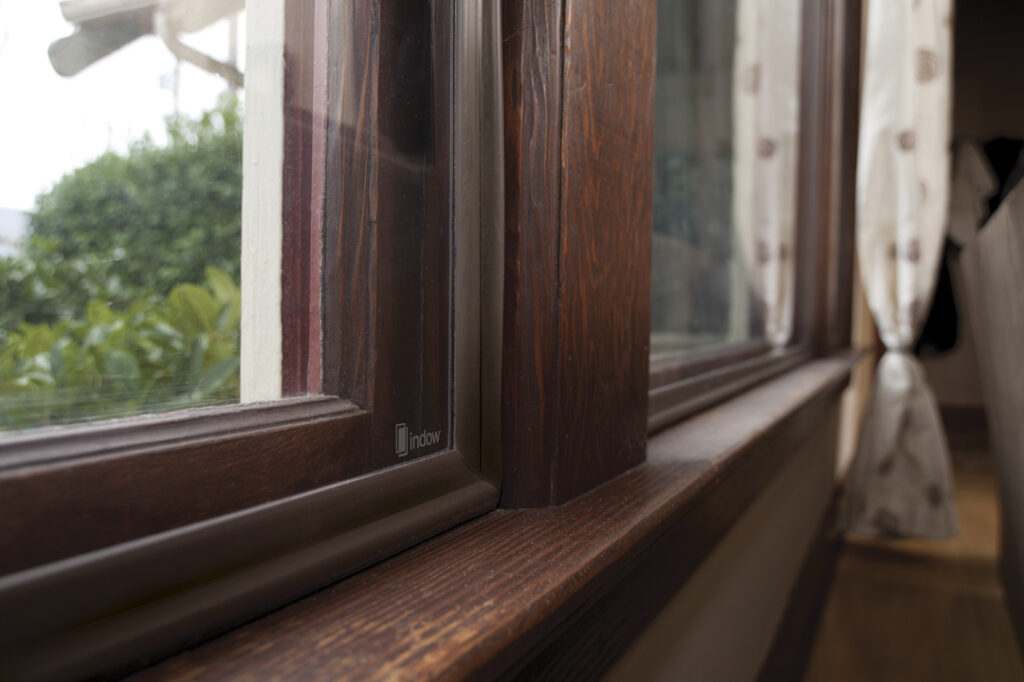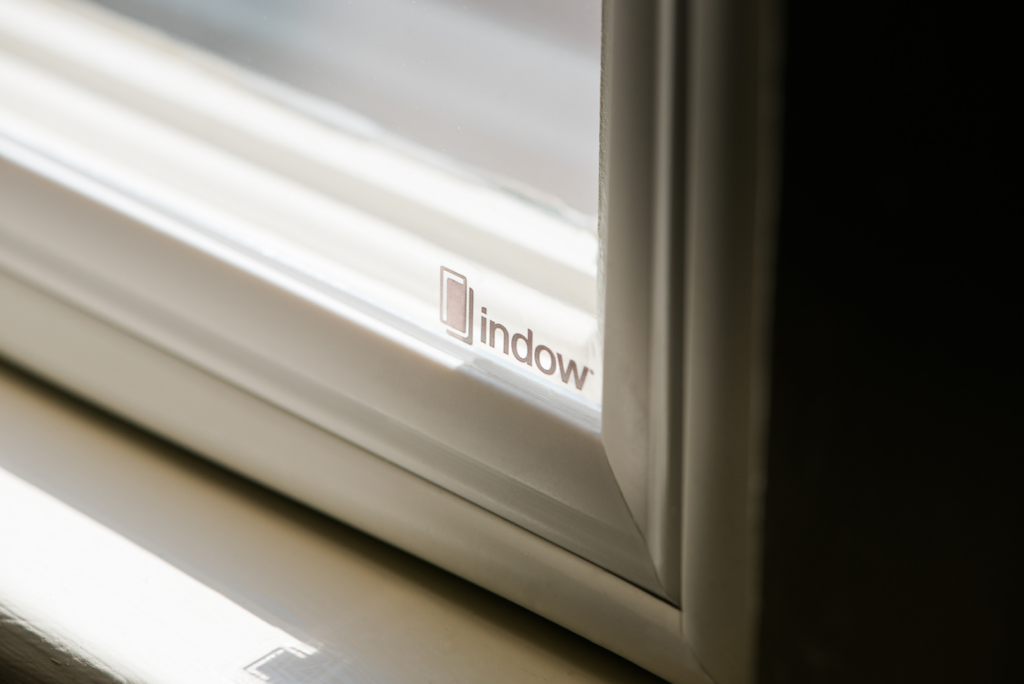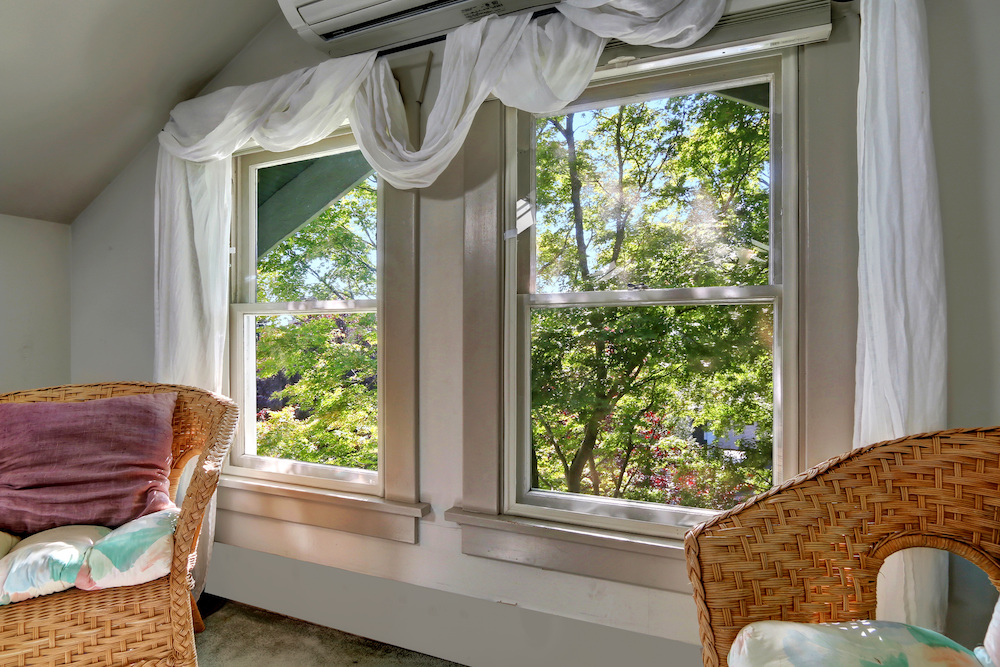This content is sponsored by Indow.
In your old house the windows are drafty, you’re probably paying a fortune to heat it, and yet you’re still cold. The solution is not to throw away your beautiful, historic windows; instead, save them with interior storm window inserts. Interior storm window inserts are an alternative to traditional exterior storm windows. Inserts provide comparable, if not superior, levels of insulation, both for temperature and sound. However, inserts differ from normal storm windows in several key ways. Functioning as an extra pane of glass, inserts sit within the window frame on the inside of the house. By creating pockets of air, they insulate effectively against unwanted noise and drafts. Some inserts can also protect against harmful UV rays that would otherwise damage fine fabrics and furniture within your house.

Interior storm windows have major advantages in terms of efficiency, cost, style, and ease of installation. But are they the best solution for you? Let’s go over some pros and cons of traditional storm windows and storm window inserts to get a clearer picture of their efficacy so you’ll know, beyond a shadow of a doubt, which option is rightfor you and your home.
TRADITIONAL STORM WINDOWS
THE PROS
• Protection: Storm windows do a great job of protecting your windows from external damage from the elements or neighborhood children.
• Durability: The average lifetime for high-quality storm windows is over a decade, or longer if you maintain them properly. If you’re living in an area with frequent hurricanes or wind storms, you’ll want to keep a closer eye on the upkeep of your storm windows.
• Insulation: Storm windows form an added layer to your home’s existing windows. Storm windows will help keep the warm air in and the cold air out during the winter and vice versa in the summer. However, they do not have the same level of insulation as interior counterparts, as they have weep holes that allow water between the window and storm window drain.
• Affordable: When compared to the price of replacement windows, storm windows are hundreds of dollars less and much less of a headache in terms of installation costs.
THE CONS
• Alterations: Storm windows will require you to make physical alterations to the external frames of your home’s existing windows. These alterations can range anywhere from drilling, to installing clamps, to completely replacing your window frames. For those living in historic housing, this often isn’t an option.
• Change in Home’s Aesthetics: It can be a pain to find storm windows that match the existing look of your home, and mismatched storm windows might negatively affect the value of your house.
• Poor Materials: Along with their aesthetic shortcomings, many storm windows are made of lower-quality materials like vinyl or fiberglass. These materials generally diminish the value of a home and are extremely difficult to recycle after the lifetime of the storm window expires.
• Maintenance: Unless you want to keep your storm windows on all year long, you’ll have to remove and reinstall them at least twice per year. This won’t be a problem for those with the time and mobility to get out the ladder and the tool box. The maintenance and physical labor required to maintain these storm windows might be more trouble than they’re worth.

STORM WINDOW INSERTS
THE PROS
• Discretion: When measured to fit the window frame in question, inserts can blend in perfectly with almost any window design. It’s easy to forget your window inserts are even there. For homeowners living in historic houses, window inserts are an invaluable method for insulation.
• Preservation: Windows age over time and even windows kept in great condition only have a lifespan of about 100 years. However, with proper care and maintenance, and the addition of a window insert, historic windows could last you another hundred years.
• Soundproofing: A surprising benefit of window inserts is their noise reduction. Due to the air pocket and seal created by the insert, outside noise is reduced by 50-70%*, a benefit that does not come with traditional storm windows.
• Insulation: Unlike exterior storm windows, inserts, such as those from Indow, can create an airtight seal. Exterior storms usually have weep holes to let water entering between the window and storm window drain. Because interior storm windows aren’t exposed to the elements, there is no need for weep holes and, therefore, can create a more airtight seal and better insulation.

• Return on Investment: As with any insulation method, storm window inserts can save you hundreds of dollars annually on energy bills. And the savings accrued over a few summers and winters will more than make up for the initial, reasonable price.
• Easy Installation: Storm window inserts can be installed and uninstalled with ease. Homeowners with every range of mobility should have no trouble fixing their inserts into their frames because interior storm window inserts can be custom-made to fit your window frames perfectly. And you won’t need to pay a contractor for labor, as you’ll be able to install them yourself.
*We want to ensure our inserts help solve your noise problem. Overall noise reduction depends on the amount of noise coming through your walls, ceilings, floors, doors, and existing windows. Noise reduction will be less when placed over double-pane windows. Read our full Noise Reduction Sheet to learn more.

THE CONS
External Defense: Since storm window inserts go inside the home, they don’t protect your windows against external damage. If you live in an area with high winds or frequent hail storms, this might be something you want to consider. Alternatively, because inserts are an interior feature for your house’s windows, they do protect against internal damage, which might be a more frequent problem.
Opening Windows: In order to open your window, you’ll have to remove the insert first. If you open windows often, this could be considered a con. However, Indow inserts use compression tubing that is extremely durable and easy to remove and reinstall without affecting the life of the insert itself. Remove by pulling the D-ring and unhooking the safety chain (if present). Re-install by lining up each corner with the window frame and pressing insert into place.

MAXIMIZING EFFICIENCY WITH INDOW INSERTS
Aileen’s mission was to boost historic home energy efficiency for her Seattle house. She got rid of her oil furnace and electric baseboards. She air sealed and insulated. She even participated in an energy efficiency study by the US Department of Energy. But she wanted to go further and the one element that remained unaddressed in her historic home energy efficiency project was incredibly important: her windows.
Aileen began searching for window efficiency ideas and soon learned that Indow inserts could provide as much comfort and energy efficiency as high-end replacement windows. She decided to put Indow inserts in 27 of the single-pane windows in her 1916 Seattle home. And it’s made a world of difference.
A follow up energy efficiency study for the U.S. Department of Energy prepared by the Pacific Northwest National Laboratory found that the Indow window inserts reduced her heating, ventilation and air-conditioning energy use by more than 20%. She would have had to have gotten high-end double or triple-pane windows, at great expense, to achieve that level of savings. That’s important when you consider that energy use in residential homes has increased to 22 percent of total energy use in the United States. Reducing energy loss through windows is one of the most important steps individuals can take to address climate change.
“You can take a 100-year-old historic home and by doing some effective things, you can make it as energy efficient as a new building. The biggest difference I noticed was the sound reduction, I’m on a residential street but you get a whole lot of noise penetration with single-pane windows.” – Aileen Gagney, Home Owner, Seattle Washington
Indow is AERC certified! AERC, the Attachments Energy Rating Council, is an unaffiliated organization that rates window attachment products on energy efficiency by measuring various factors such as Air Leakage (AL) and U-Factor.
On air leakage, Indow scored in the top two out of 22 storm windows tested, 11 of which were interior storm windows. U-Factor is an indicator of heat transfer through a surface. It tells you how well a window product insulates. Indow inserts have a U-Factor of .3, making them a top performer on insulation among all available storm windows. Indow inserts are your solution for comfort, quiet, and energy savings.

CHOOSING THE BEST SOLUTION FOR YOUR HOME
When it comes down to it, storm windows and storm window inserts are both great tools for the same job. Traditional storm windows can cost less initially, but can be trickier to use due to the difficulty of maintenance and installation, and cheaper versions are usually made of low-quality material. Storm window inserts are best for those looking to make the least amount of changes possible to their home, want to be able to install the inserts themselves, or have a historic home that precludes the use of exterior storm windows. If you think window inserts are the right fit for your house, Indow offers various product types that can address your window issues. Whether you’re insulating your living room or your business, there’s an Indow insert that will meet your needs.







